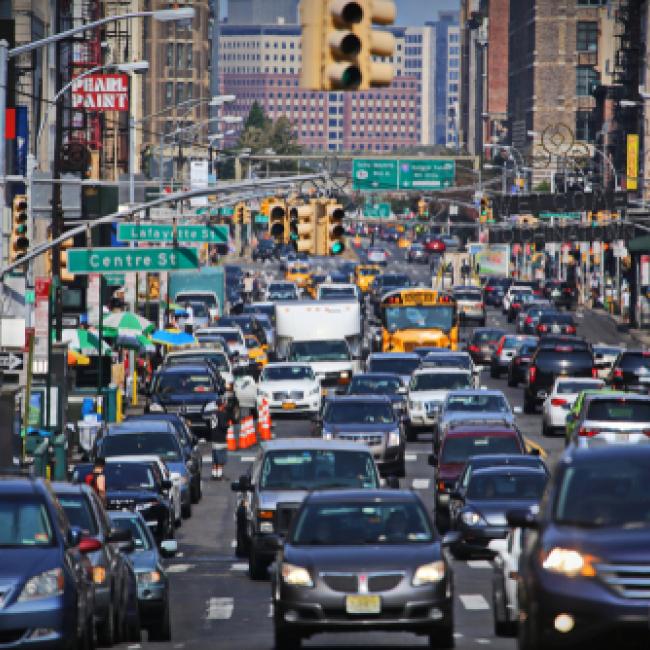Project Summary
The New York State (NYS) Legislature has authorized a traffic congestion pricing plan for Manhattan, which will allow fees to be placed on vehicles driving in Manhattan streets and roadways south of and including 60th Street. The project team will evaluate the impact of this landmark congestion pricing policy, scheduled to go into effect in early 2022, on air quality, health outcomes, and the extent to which the policy affects racial and economic inequities among residents in the study areas.
Research Questions/Aims
- What is the impact of the congestion pricing plan on:
- Air quality;
- Rates of adverse birth outcomes and childhood asthma acute care events; and
- Reducing or exacerbating racial and economic inequities in air quality exposure and health outcomes in the congestion zone and directly impacted areas?
Actionability
- Serve as an important model on how to improve population health and health equity in New York City and implement effective and equitable congestion-related policies in other U.S. cities.
Outcomes
Health & wellbeing: Adverse birth outcomes (pre-term delivery, low birth weight, small for gestational age), childhood asthma acute care events (monthly asthma ED visits)
Other: Air quality (concentrations of PM2.5, NOx, and O3) and traffic-related accidents (e.g., bicycle/pedestrian injuries and motor vehicle accidents)
Methodology
The team will leverage the implementation of the traffic congestion pricing plan as a natural experiment to evaluate the short-term impact of the policy on air quality and health outcomes by comparing changes over time in impacted areas against trends in control areas selected using synthetic control methods (SCM). To identify the extent to which the congestion pricing plan reduces or exacerbates air quality and health outcome inequities, the team will identify the racial/ethnic and economic distribution of residents in the congestion zone, directly impacted areas, and synthetic control areas. They will determine the census tracts within study areas with (1) high proportion of racial/ethnic minorities (defined as ≥50% Black and Hispanic residents) and (2) low-income (defined as a poverty rate of 20% or a median income below 80% of the state median family income) using American Community Survey data. Using SCM, they will then estimate the differential changes in rates of adverse health outcomes in groups (1) and (2) resulting from the traffic congestion pricing plan compared to if the plan had not been enacted.

NYU Grossman School of Medicine
George Mason University
Regional Plan Association
Riders Alliance
Environmental Defense Fund
NYC Department of Health and Mental Hygiene